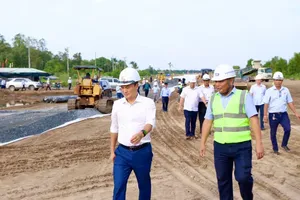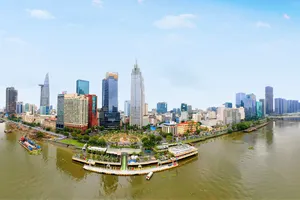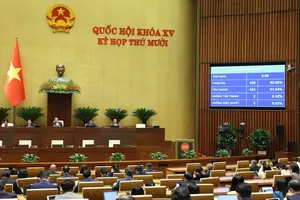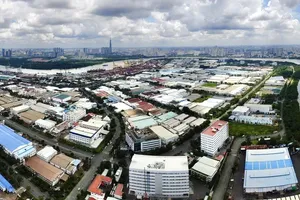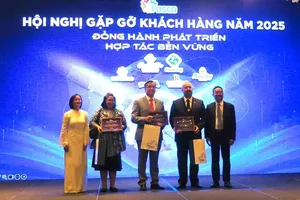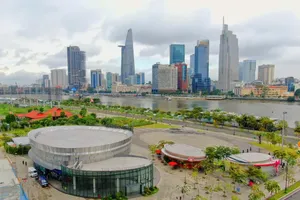Rather than simply becoming a “larger city,” the envisioned megacity would function as a new urban entity, a smart metropolis with a strategic role and responsibility at both the national and regional levels.
The integration of three of southern Vietnam’s most dynamic localities is far more than the merging of names on an administrative map; it marks the birth of a new development space, spanning over 6,770 square kilometers and home to more than 13.7 million people, and creates a regional-scale megacity with broad influence both domestically and internationally.
This merger helps optimize the unique strengths of each locality and establish a closely connected economic zone where industry, services, logistics, maritime ports, energy, and marine tourism reinforce one another.
Establishing a new development zone
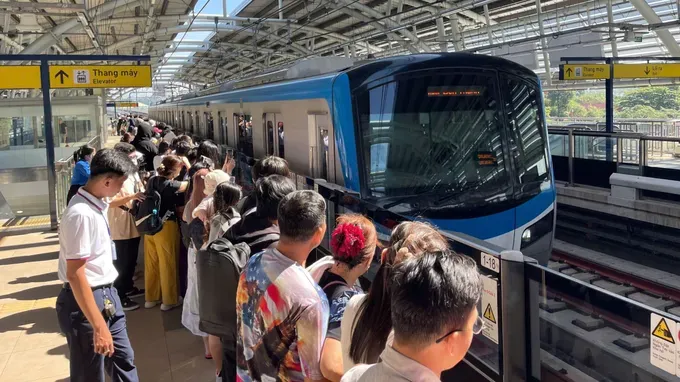
Dr. Nguyen Sy Dung, former Deputy Head of the Office of the National Assembly, remarked that Ho Chi Minh City has long been Vietnam’s leading economic center. With the added synergy of Binh Duong, an industrial powerhouse in manufacturing, and Ba Ria–Vung Tau, a coastal gateway and major energy hub, the newly envisioned Ho Chi Minh City is expected to develop into a true economic locomotive for Southeast Asia.
Notably, Ho Chi Minh City must serve as a regional connection hub, developing under a multi-centered model. Thu Thiem should become the financial nucleus, Binh Duong will serve as the high-tech industrial pole, and Ba Ria–Vung Tau will be the core for logistics, seaport operations, and renewable energy.
More importantly, the new Ho Chi Minh City would become a new model of a smart, sustainable urban area where technology, institutions, and humans work in tandem to shape a development space that is not only modern and socially cohesive but also preserves cultural identity. The building of strategic economic corridors such as Ho Chi Minh City–Bien Hoa–Dau Giay, Ho Chi Minh City–Thu Dau Mot–Bau Bang, and Ho Chi Minh City–Cai Mep–Long Thanh are expected to serve as strategic breakthroughs enabling the megacity to make bold leaps in the coming decade.
Another critical pillar is the creation of space for innovation. The new Ho Chi Minh City cannot rely solely on natural resource exploitation or traditional industrial production. Instead, it must evolve into a creative city where individuals and organizations alike can contribute ideas, launch startups, and drive innovation. The city must establish forums and platforms to attract and recognize development initiatives from all sectors of society, both domestic and international. Creativity must become the primary engine of growth, Dr. Nguyen Sy Dung further emphasized.
In addition, the implementation of Politburo’s Resolution No. 57-NQ/TW on advancing science, technology, innovation, and national digital transformation (Resolution 57) will serve as a critical “key” for the new Ho Chi Minh City to align with global development trends.
Synchronizing breakthrough solutions
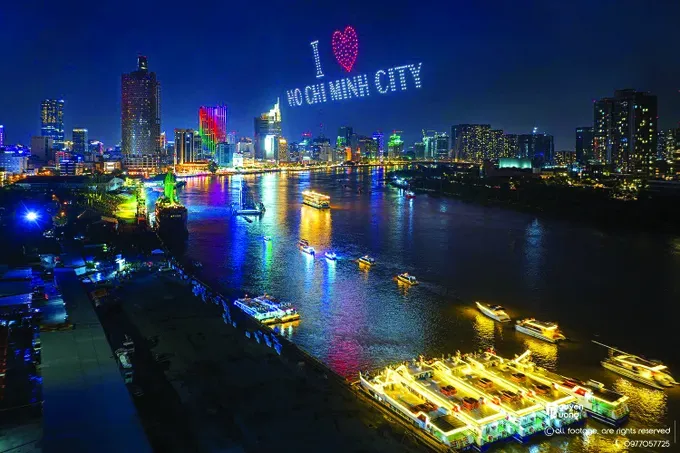
Following the merger, the new Ho Chi Minh City stands at the threshold of an unprecedented opportunity, yet it must also confront significant challenges. Transforming potential into reality requires a series of synchronous breakthrough solutions, both in terms of institutions, governance, and resource mobilization.
Associate Professor Dr. Tran Hoang Ngan, National Assembly deputy and assistant to the Secretary of the Ho Chi Minh City Party Committee, Nguyen Van Nen, emphasized that the merger is not merely about expanding development space. Rather, it represents the convergence and mutual reinforcement of the strengths and capacities of three dynamic provinces, uniting to form a modern, powerful new growth engine capable of propelling the southern Vietnamese economy forward.
Under this model, the new Ho Chi Minh City could contribute up to one-quarter of the nation’s GDP, one-third of total state budget revenues, and over one-fifth of Vietnam’s import-export turnover.
However, to operate effectively, it is crucial to maintain the city’s existing special mechanisms and policies, particularly the continued implementation of Resolution 98/2023/QH15 on the pilot implementation of specific mechanisms and policies for the development of HCMC, which was approved by the National Assembly (NA). In addition, it needs to hand over the highest authority to each sub-region within the megacity, ensuring that over-centralization does not become a bottleneck to innovation and growth.
One key solution is the establishment of the Coordination Board for the Development of Greater Ho Chi Minh City, which would function as a “regional government” with authority over master planning, investment coordination, resource allocation, and implementation oversight.
According to Dr. Nguyen Sy Dung, this model must have sufficient interprovincial coordination authority, have its budget, and report directly to the Government, akin to regional councils in France and Germany or the federal urban model in the US.
Besides, a unified big data platform should be developed by integrating databases from all three localities to lay a unified smart urban management system at the scale of a megacity.
A comprehensive digital government must also be deployed, from the municipal level down to ward and commune levels. This includes simplification of procedures and digitization of public services to better serve both citizens and businesses.
Moreover, the new megacity must take the lead in innovating governance models. With a complex and expansive scale, the new Ho Chi Minh City must demonstrate its pilot role in institutional reform, building a streamlined two-tier urban government, developing digital governance, and integrating big data into the management of urban planning, transportation, environment, and public services. They are essential prerequisites for operating a vast urban entity whose population, territory, and economic footprint far exceed those of a traditional city.
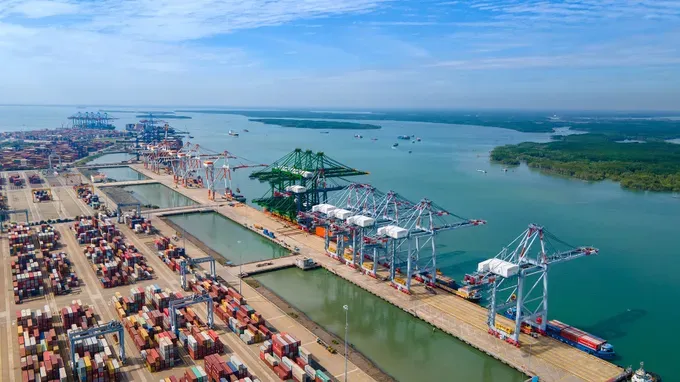
Mr. Nguyen Quang Huan, National Assembly deputy and Vice President of the Vietnam Association of Private Entrepreneurs, pointed out that Ho Chi Minh City, Binh Duong, and Ba Ria–Vung Tau each face bottlenecks when operating independently, particularly in terms of land availability, infrastructure, and logistics.
The merger would create a vastly expanded development space, allowing Binh Duong, which lacks direct access to the sea, to leverage the deep-sea port infrastructure of Ba Ria–Vung Tau for enhanced regional connectivity and growth.
Additionally, Ba Ria–Vung Tau would gain capabilities in science and technology, human resources, and industrial development through closer integration with Ho Chi Minh City and Binh Duong.
However, the new Ho Chi Minh City should establish strong decentralization mechanisms, avoiding a top-down approach. Instead, it should encourage each locality to proactively leverage its unique strengths.
Comprehensively, the new Ho Chi Minh City carries great expectations to become a national growth engine, a model of a smart, sustainable, and regionally integrated metropolis, and a destination for global capital, technological knowledge, and international talent.
However, to truly rise and thrive in the new era, the city must take an even more proactive approach to mindset innovation and institutional reform and create a favorable environment where all resources can be mobilized, connected, and fully leveraged.
Only then will the new Ho Chi Minh City emerge as a symbol of a modern, dynamic, and globally integrated Vietnam, helping to elevate the nation’s stature on the international stage in the 21st century.
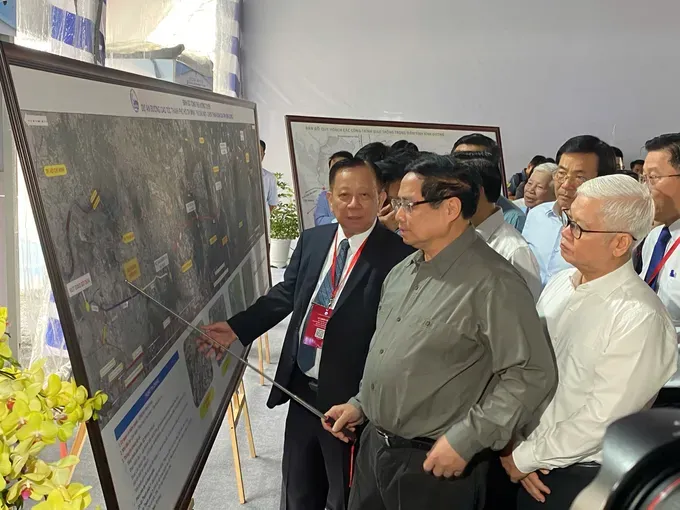
Mr. Nguyen Minh Duc, Vice Chairman of the National Assembly (NA) Committee for National Defense, Security, and Foreign Affairs, said that the new Ho Chi Minh City will be a unique and expansive urban center, integrating the advantages of today’s Ho Chi Minh City with neighboring provinces of Binh Duong and Ba Ria–Vung Tau. The three localities will form a smart, coastal-oriented logistics hub.
Binh Duong is expected to become the concentrated industrial production capital, serving as a dry port for goods to be gathered and then brought to seaports in Ho Chi Minh City and Ba Ria–Vung Tau. This system will create a streamlined flow of logistics, removing current bottlenecks. More importantly, the regional connectivity that once faced challenges due to different local policies will now be unified under a cohesive framework. That’s why strong leadership and consensus from the new city’s Party Committee are essential—ensuring that the city can rise rapidly, decisively addressing longstanding issues in governance, infrastructure, and geography.
According to Dr. Tran Du Lich, Chairman of the Advisory Council for the implementation of the National Assembly’s Resolution 98/2023/QH15 on piloting specific mechanisms and policies for HCMC’s development, the plan to merge Binh Duong and Ba Ria–Vung Tau with Ho Chi Minh City into a 'New Ho Chi Minh City' aims to create a driving force for the economic development of both the Southeast region and the nation as a whole.
In the future, the relationship between the New Ho Chi Minh City and the new Dong Nai Province will be critically important. Therefore, strategic alignment between these two emerging urban centers is essential. According to the master plan for the Southeast region, the industrial–urban corridor runs through Binh Duong, Ho Chi Minh City, Dong Nai, and Ba Ria–Vung Tau. For this corridor to thrive, a unified development policy must be in place to generate a true ‘gravitational mechanism’ for the entire region’s development.
Dr. Bui Ngoc Hien from the HCMC Cadre Academy said that the merger of the three localities represents an unprecedented development space, allowing Ho Chi Minh City to address long-standing challenges such as limited available land, infrastructure constraints, and declining investment appeal. The new Ho Chi Minh City can restructure urban space, zone the city with distinct and purposeful functional areas, foster a knowledge-based economy, encourage innovation, and attract a new wave of foreign direct investment (FDI). Moreover, relocating outdated industrial zones to peripheral areas would free up valuable urban land for high-quality services and international centers of innovation, education, and health. This transformation would not only accelerate economic growth but also significantly enhance the quality of urban life.

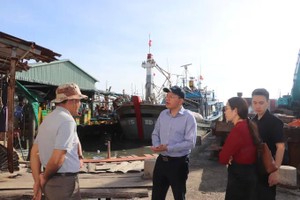

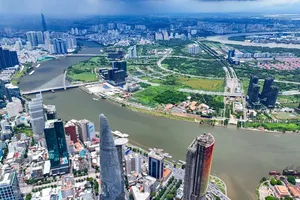
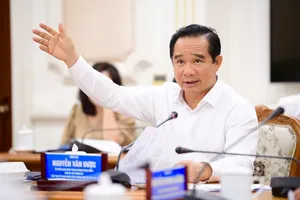


)



